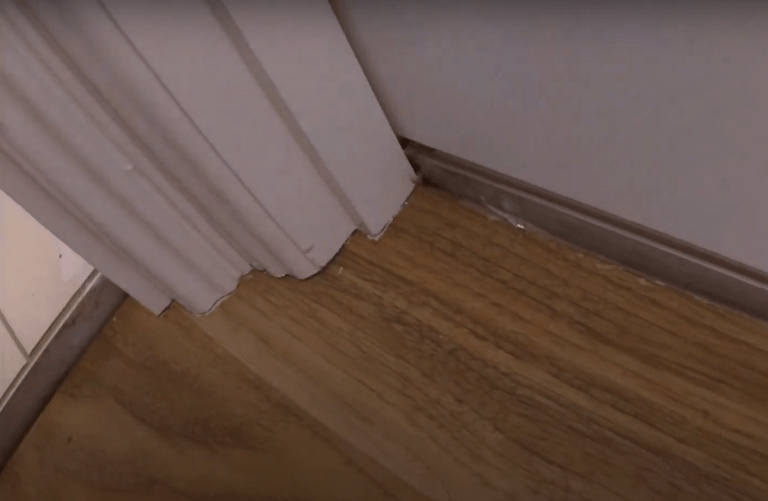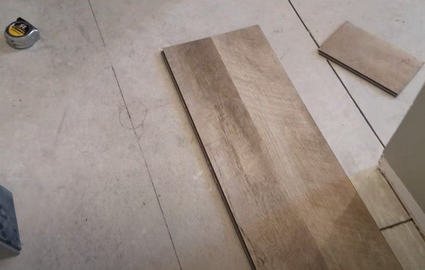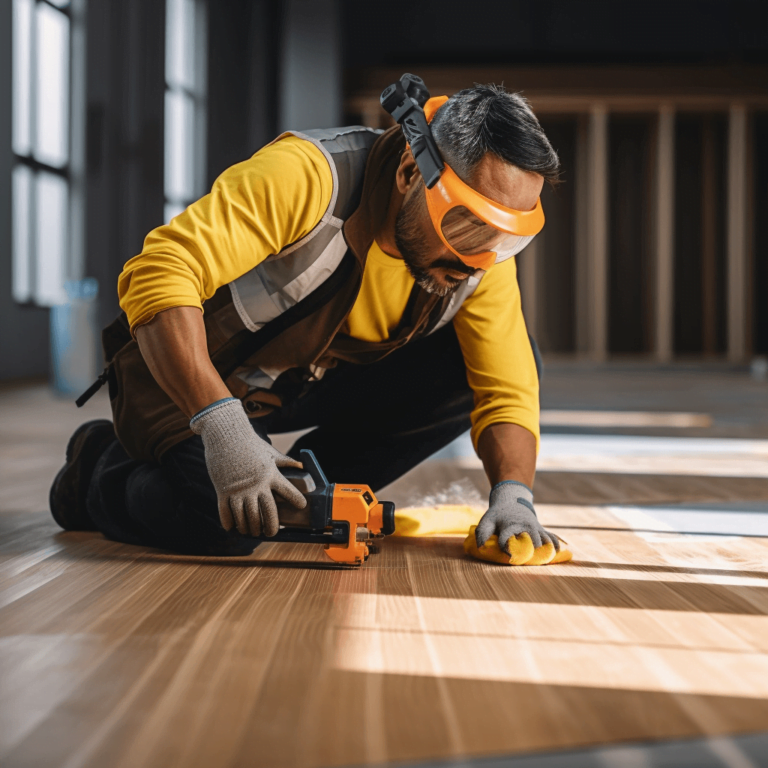Flooring Materials: Navigating the World of Options
Explore the diverse world of flooring materials, from hardwood to vinyl, and learn about their unique features and applications. Empower yourself to make informed decisions, striking the perfect balance between aesthetics, functionality, and sustainability for your flooring projects.
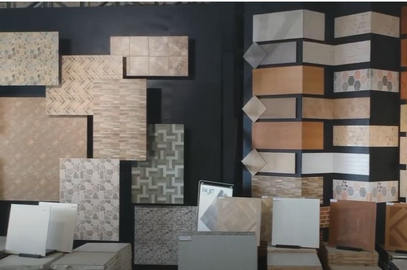
The world of flooring materials offers a diverse range of options, each with its own distinct characteristics, advantages, and disadvantages. This article aims to provide a comprehensive analysis of the history of flooring materials and the various materials available, including hardwood, laminate, vinyl, tile, and carpet. It caters to homeowners, interior design enthusiasts, architects, home remodelers, real estate investors, and flooring retailers, offering valuable insights and recommendations.
History of Flooring Materials
From ancient Egyptians who used stone floors to the Greeks who used terracotta tiles, and the Romans who introduced mosaic floors and radiant heating systems, the history of flooring materials is a testament to human innovation. Each culture brought its own style and creativity, and the result is a rich tapestry of flooring materials and techniques that have stood the test of time.
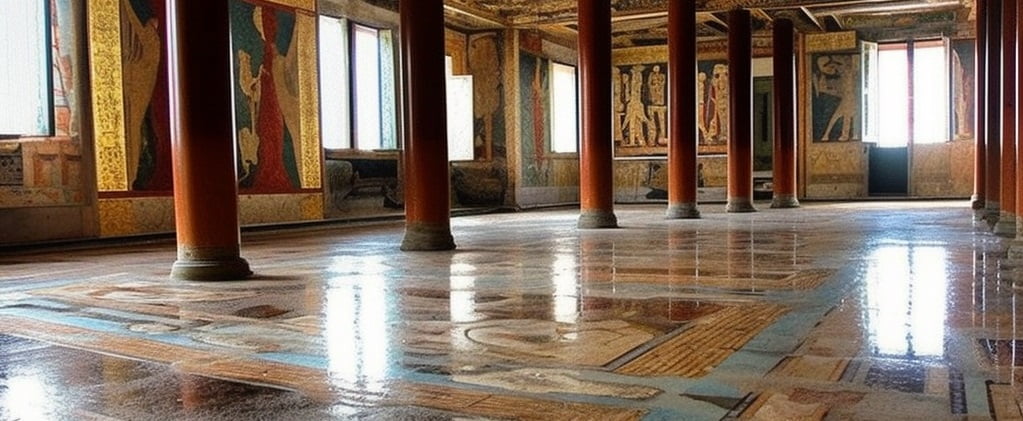
As we look back at the evolution of flooring materials, we are reminded of the importance of creating comfortable and beautiful living spaces. Today, we have access to a wide range of flooring options that cater to different preferences and budgets, but the legacy of ancient flooring materials lives on. So whether you choose to go with the timeless elegance of hardwood floors or the eco-friendly option of bamboo, remember that the history of flooring materials is a story of human ingenuity and creativity, and that each choice you make contributes to this rich tapestry of design and innovation.
Types of Flooring Materials
The flooring market is abundant with a vast array of materials, each characterized by its own distinct features, benefits, and limitations. Join us on a comprehensive journey as we delve into the diverse world of some of the most popular and sought-after flooring materials available today:
- Cork
- Cork is made from the bark of the cork oak tree, which is harvested every nine years without damaging the tree. The harvested bark is then processed into sheets, which are sliced into tiles or planks for flooring. Cork flooring is a sustainable and eco-friendly option, as it is composed of natural materials and requires minimal energy to produce. The unique cellular structure of cork makes it highly resilient and able to compress and expand without damage, giving it excellent durability and shock-absorbing properties. Cork flooring is also naturally resistant to moisture, mold, and mildew, making it an ideal choice for bathrooms, kitchens, and other damp areas. Its soft and cushioned surface provides comfort and warmth underfoot, making it a popular choice for bedrooms and living rooms. Cork flooring is easy to install, either glued or floated over a variety of subfloors, and can be stained or finished to achieve a range of colors and styles.
- Concrete
- Concrete is made from a mixture of cement, water, and aggregates such as sand, gravel, or crushed stone. The mixture is poured onto a subfloor and then leveled and smoothed to create a seamless surface. Concrete flooring is highly durable, withstanding heavy foot traffic and wear and tear over time. The versatility of concrete allows it to be stained, polished, or stamped to create a range of finishes, including high gloss, matte, or textured surfaces. Robust and adaptable, concrete flooring dominates high-traffic areas with its remarkable durability. A chameleon in the flooring world, concrete can be stained, polished, or stamped to produce an array of captivating looks. Low maintenance and a breeze to clean, concrete is a practical choice.
- Vinyl
- Vinyl is a synthetic flooring material made from polyvinyl chloride (PVC) and other additives, such as plasticizers, stabilizers, and pigments. Luxury Vinyl Tile (LVT) is a high-quality variant of vinyl flooring that boasts superior aesthetics and performance. These ingredients are mixed together and then pressed into sheets or tiles, which can be printed with a wide range of designs and patterns to replicate the look of natural materials, including wood, stone, and ceramic. The resulting material is highly durable, water-resistant, and low-maintenance, making it an ideal choice for high-traffic areas and moisture-prone spaces like kitchens and bathrooms. Vinyl flooring, especially Luxury vinyl tile (LVT), is also easy to install, often coming in interlocking tiles or planks that can be fitted together without the need for adhesives or specialized tools. Its versatility and affordability make it a popular choice for homeowners and commercial spaces seeking a stylish and practical flooring solution.
- Engineered Wood
- Engineered wood is made from several layers of genuine wood, with the top layer being a veneer of high-quality hardwood. The layers are bonded together using heat and pressure, resulting in a stable and durable flooring material that can withstand fluctuations in temperature and humidity. A beloved alternative to classic hardwood, engineered wood flooring comprises layers of genuine wood adhered together to create a sturdy and stable surface. This flooring option comes in a medley of colors and styles, offering effortless installation.
- Bamboo
- Bamboo is made from the fast-growing woody grass of the bamboo plant, which is harvested and processed into flooring planks. The manufacturing process involves slicing the bamboo stems into thin strips, which are then glued together under high pressure and heat, resulting in a durable and stable material that can withstand heavy foot traffic. As a sustainable and increasingly popular flooring material, bamboo is celebrated for its durability, ease of maintenance, and array of colors and styles. Bamboo’s eco-friendly reputation is further enhanced by its status as a rapidly growing plant, harvestable every five years.
- Stone
- Stone is made from a variety of natural stone materials, including marble, granite, limestone, travertine, and slate, each with its unique colors, patterns, and textures. The manufacturing process involves cutting the stone into tiles and honing, polishing, or brushing the surface to achieve the desired finish. Authentic and available in a diverse color palette and patterns, stone flooring exudes durability and longevity, making it the perfect fit for bustling spaces. Effortless to clean and maintain, stone flooring is both practical and aesthetically pleasing.
- Tile
- Tile is typically made from a variety of materials, including ceramic, porcelain, and natural stone. A favored flooring material, tile presents a delightful selection of colors, sizes, and styles. Waterproof and resilient, tile flooring is ideal for kitchens, bathrooms, and other moisture-laden areas. Additionally, tile is a breeze to clean and maintain.
- Hickory
- Hickory is a dense and strong hardwood derived from the hickory tree, which is native to North America. Hickory wood is characterized by its bold grain patterns and striking color variations, ranging from light to dark hues, making each plank unique. Known for its exceptional durability and resistance to wear and tear, hickory hardwood flooring dazzles in various colors and finishes, effortlessly handling the demands of high-traffic areas. Easy to maintain, hickory flooring can be sanded and refinished as needed.
- Laminate
- Laminate is a composite material made by fusing several layers together through a lamination process. The core layer is typically made of high-density fiberboard (HDF) or medium-density fiberboard (MDF), providing stability and durability. Above the core layer, there is a high-resolution photographic image layer that imitates the appearance of various materials, such as wood, stone, or ceramic. This image layer is protected by a transparent wear layer, which offers resistance to scratches, stains, and fading. A synthetic flooring option, laminate entices with its diverse colors and patterns. Durable and scratch-resistant, laminate flooring is perfectly suited for bustling areas. Moreover, laminate flooring is straightforward to install and maintain.
- Wood
- Wood is made from a variety of hardwood species, such as oak, maple, walnut, and cherry, among others, each offering its distinct characteristics, colors, and grain patterns. The manufacturing process involves cutting the lumber into planks, which are then kiln-dried to remove moisture, ensuring stability and preventing warping. These planks can be finished with a protective coating, such as polyurethane or oil, which enhances the wood’s natural beauty and durability. A timeless flooring material, wood creates a warm and inviting atmosphere with its range of colors and finishes. Ideal for bedrooms, living rooms, and other cozy spaces, wood flooring is also easy to clean and maintain.
- Ceramic
- Ceramic is made from a mixture of clay, water, and various minerals, which are shaped into tiles and fired at high temperatures to harden and strengthen the material. The tiles can be left unglazed, which results in a matte, natural finish, or covered with a layer of liquid glass glaze, which adds a glossy sheen and increases the tile’s resistance to moisture, stains, and scratches. Ceramic flooring, both durable and versatile, reigns supreme in high-traffic areas. With an assortment of colors, sizes, and styles, ceramic is not only easy to clean and maintain but also resists scratches and stains.
- Brick
- Brick is made from natural clay, which is shaped into bricks, dried, and then fired at high temperatures in a kiln to create a durable, hard, and water-resistant material. Bricks come in various colors, shapes, and sizes, depending on the type of clay used and the firing process, allowing for a wide range of design options. Rustic and robust, brick flooring is a charming option for outdoor spaces like patios and walkways, while also lending warmth and character to indoor spaces. Low maintenance and simple to clean, brick flooring is a practical yet visually appealing choice.
- Porcelain
- Porcelain is made from a refined mixture of clay, feldspar, and other minerals, which are shaped into tiles and fired at extremely high temperatures. This process results in a dense, hard, and vitrified tile that is less porous than ceramic, making it more resistant to moisture, stains, and scratches. Highly durable and scratch-resistant, porcelain flooring reigns supreme in bustling spaces. Available in an enticing variety of colors and patterns, porcelain is not only easy to clean and maintain but also waterproof, making it suitable for moisture-rich areas.
- Polyvinyl Chloride (PVC)
- Polyvinyl Chloride (PVC) , also known as vinyl flooring, is a synthetic material composed of a combination of plasticizers, stabilizers, and other additives mixed with PVC resin. The resulting material is highly durable, water-resistant, and versatile in design. PVC flooring is available in various formats, such as sheets, tiles, or planks, and can replicate the appearance of a wide range of materials, including wood, stone, and ceramic. A synthetic material known for its impressive durability and water resistance, PVC flooring comes in a plethora of colors and patterns, making it an ideal choice for high-traffic areas. Furthermore, PVC flooring is a breeze to clean and maintain.
- Hardwood
- Hardwood is made from solid lumber derived from various tree species, such as oak, maple, walnut, cherry, and hickory, among others. Each species offers its unique characteristics, colors, and grain patterns, allowing homeowners to select a style that complements their interior design preferences. The manufacturing process involves cutting the lumber into planks, which are then kiln-dried to remove moisture, ensuring stability and preventing warping. These planks are finished with a protective coating, such as polyurethane or oil, which enhances the wood’s natural beauty and increases its durability. A classic and timeless option, hardwood flooring enchants with its array of colors and finishes. Emitting warmth and inviting charm, hardwood is perfect for bedrooms, living rooms, and other cozy spaces. Additionally, hardwood flooring is durable and can be sanded and refinished when necessary.
- Linoleum
- Linoleum is made from a blend of natural ingredients, including linseed oil, cork dust, wood flour, and limestone, which are mixed together and pressed onto a jute or canvas backing. The resulting material is highly durable, resilient, and biodegradable, making linoleum an eco-friendly and sustainable flooring option. An eco-friendly flooring material composed of natural ingredients like linseed oil, cork dust, and wood flour, linoleum is highly durable and easy to clean, making it a prime candidate for high-traffic areas. Available in a wide range of colors and patterns, linoleum offers both style and sustainability.
- Granite
- Granite is made from natural granite stone, an igneous rock formed through the slow crystallization of magma beneath the Earth’s surface. Granite is characterized by its unique speckled appearance, resulting from the interlocking mineral crystals, such as quartz, feldspar, and mica, that make up its composition. Luxurious and highly durable, granite flooring captivates with its scratch-resistant surface and assortment of colors and patterns, adding a touch of opulence to any space. Granite flooring is not only easy to clean and maintain, but it also exudes elegance and sophistication.
- Glass
- Glass is made by laminating several layers of tempered glass, which are bonded together using a high-strength resin or interlayer. This process results in a strong, durable, and shatter-resistant material that can support heavy weights and withstand impacts. A unique and contemporary choice, glass flooring imparts a sense of refinement and sophistication to any area. Highly durable and scratch-resistant, glass is available in a myriad of colors and styles, seamlessly blending beauty and practicality. Glass flooring is also easy to clean and maintain, making it a stunning yet functional option.
Flooring Materials for Varied Applications
Distinct spaces call for diverse flooring materials to cater to their particular requirements. Let’s explore some of the most prevalent applications for flooring materials:
For Homes
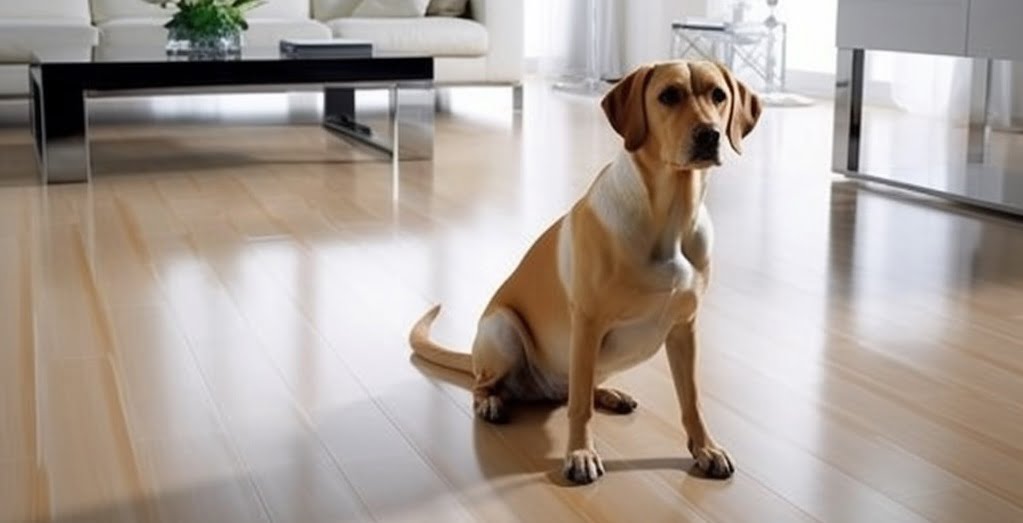
Selecting the perfect flooring material for your home is crucial, both functionally and aesthetically. Each flooring in every area of the house should harmonize with the space’s overall design and décor while remaining practical for its intended purpose. In this section, we will delve into the most common areas & rooms in a home and the ideal flooring materials for each, encompassing bathrooms, outdoor spaces, decks, pools, staircases, basements, and backyard areas. By grasping each space’s unique needs and demands, you can choose a flooring material that marries function and visual appeal in your home.
- Living Room
- Living room flooring should be both stylish and functional, as this room serves as the centerpiece of your home. Popular materials for living room flooring include hardwood, engineered wood, laminate, luxury vinyl planks, and carpet. These materials can easily cater to various design styles and preferences while providing a comfortable and durable surface for everyday use.
- Dining Room
- Dining room flooring should be durable, easy to clean, and visually appealing, as it serves as the backdrop for family meals and social gatherings. Materials such as hardwood, engineered wood, laminate, and luxury vinyl planks are popular choices for dining rooms. These materials offer a range of design options and can withstand the wear and tear of frequent use.
- Bedroom
- Bedroom flooring should be comfortable, warm, and visually pleasing. Materials such as hardwood, engineered wood, carpet, and luxury vinyl planks are ideal for bedrooms, providing a cozy and inviting atmosphere. Each material has its own set of benefits, from the elegance and warmth of hardwood to the softness and noise reduction offered by carpet.
- Kitchen
- Kitchen flooring should be durable, easy to clean, and resistant to spills and stains. The most popular materials for kitchen flooring include ceramic and porcelain tiles, natural stone, luxury vinyl planks, and hardwood. Each of these materials offers an array of design possibilities and provides the essential practical advantages needed in a kitchen environment.
- Home Office
- Home office flooring should be comfortable, durable, and low-maintenance, as it needs to withstand the demands of a workspace while providing a pleasant environment. Materials like hardwood, engineered wood, laminate, luxury vinyl planks, and carpet are suitable for home offices, offering various design possibilities and ensuring a professional and inviting atmosphere.
- Bathroom
- Bathroom flooring calls for water resistance, effortless cleaning, and slip resistance to guarantee safety and cleanliness. Favored materials for bathroom flooring include ceramic and porcelain tiles, natural stone, and luxury vinyl planks. These materials proffer an array of design possibilities while delivering the essential practical advantages for damp surroundings.
- Garage
- Garage flooring should be durable, stain-resistant, and easy to clean, as it must endure the challenges of a working and storage space. Materials such as epoxy coatings, interlocking tiles, and concrete sealers are popular choices for garage floors. These materials provide a durable and low-maintenance surface that can withstand the rigors of vehicular traffic, spills, and heavy equipment.
- Outdoor
- Outdoor flooring necessitates durability, weather resistance, and visual allure, as it serves as an extension of indoor living spaces. Materials such as natural stone, concrete, brick pavers, and composite decking are sought-after choices for patios, walkways, and other outdoor areas. They offer various design options and can endure harsh outdoor conditions.
- Deck
- Deck flooring should resist moisture, insects, and the elements while remaining visually appealing. Wood, like cedar, redwood, or pressure-treated pine, is a classic choice for deck flooring. Composite decking, crafted from a blend of wood fibers and plastic, is another alternative offering low maintenance and resistance to rot, insects, and fading.
- Pool
- Pool flooring demands slip resistance, ease of cleaning, and the ability to withstand exposure to water and chemicals. Materials like natural stone, porcelain tiles, and concrete provide durability, safety, and design versatility for pool areas. These materials can be tailored to create a distinctive and visually appealing pool ambiance.
- Staircase
- Staircase flooring ought to offer safety, durability, and visual charm. Materials such as hardwood, engineered wood, carpet, and tile are popular selections for staircase flooring. Each material boasts its own set of benefits, from the elegance and warmth of hardwood to the softness and noise reduction proffered by carpet.
- Basement
- Basement flooring requires moisture resistance, durability, and the ability to tackle the unique challenges of below-grade environments. Materials like vinyl planks, engineered wood, and ceramic or porcelain tiles are suitable for basements, as they can address potential moisture issues and provide a comfortable, stylish surface.
- Backyard
- Backyard flooring should be durable, weather-resistant, and complement the overall landscape design. Materials such as natural stone, concrete, brick pavers, and wood or composite decking can create appealing and functional backyard spaces, like patios, walkways, and outdoor entertainment areas. These materials present various design possibilities, ensuring a cohesive and visually pleasing outdoor space.
In Schools
School flooring must be long-lasting, low-maintenance, and safe for students and staff. It should also offer comfort and noise reduction, fostering a conducive learning environment. Materials like vinyl, linoleum, and rubber are commonly employed
For Hotels
Hotel flooring should evoke a welcoming and luxurious ambiance while providing durability and easy maintenance. A combination of materials, such as carpet for guest rooms and hallways, tile or stone for bathrooms and lobbies, and hardwood or engineered wood for dining areas, can deliver an upscale and cohesive design.
For Horse Stables
Horse stable flooring must ensure comfort, safety, and durability for both horses and handlers. Materials like rubber mats, interlocking pavers, and compacted stone dust are favored choices for their slip-resistant properties, effortless maintenance, and shock-absorbing qualities.
In Elevators
Elevator flooring needs to be durable, slip-resistant, and easy to clean, as it experiences high foot traffic and potential spills. Materials like vinyl, rubber, and porcelain tiles are commonly employed in elevators due to their practical benefits and aesthetic appeal.
In Commercial Spaces
Commercial flooring must withstand heavy foot traffic, wear and tear, and provide a safe and attractive environment. Materials such as carpet tiles, vinyl, laminate, and polished concrete are popular choices for commercial spaces like offices, retail stores, and restaurants.
For Hospitals
Hospital flooring calls for materials that are hygienic, easy to clean, and provide comfort for patients and staff. Vinyl, linoleum, and rubber flooring are common selections due to their antimicrobial properties, slip resistance, and noise reduction qualities.
For Restaurants
Restaurant flooring should be visually appealing and highly functional, as it must endure spills, heavy foot traffic, and constant cleaning. Materials like porcelain tiles, stained concrete, and commercial-grade vinyl are suitable choices for their durability, low maintenance, and design versatility.
In Boats
Boat flooring requires water resistance, slip resistance, and the ability to withstand the harsh marine environment. Materials like marine-grade vinyl, teak, and synthetic decking offer durability, low maintenance, and a stylish appearance for boat interiors and exteriors.
For Gyms
Gym flooring should cater to safety, comfort, and durability for various physical activities. Rubber flooring, interlocking foam tiles, and sports vinyl are popular choices due to their shock absorption, slip resistance, and ease of maintenance.
The Importance of Choosing the Ideal Flooring Material
The significance of selecting the perfect flooring material cannot be overstated, as it lays the foundation for a space’s overall functionality, visual appeal, and comfort. Choosing the right flooring not only enhances the aesthetic quality of your living spaces but also ensures that your rooms are comfortable and practical for daily use. A well-chosen flooring material can elevate the ambiance and create a lasting impression on guests and residents alike. It is an investment in the longevity and value of your property, as high-quality flooring materials often contribute to increased resale value.
In addition to aesthetics and functionality, the right flooring material also plays a crucial role in determining the long-term worth, maintenance requirements, and environmental ramifications of a property. A durable and low-maintenance flooring option can save homeowners time and money in upkeep costs while contributing to a more sustainable living environment. When selecting a flooring material, consider the following factors:
Cost
The cost of flooring materials varies significantly based on factors such as quality, material type, and labor costs for installation. It’s essential to consider both the initial investment and long-term maintenance expenses when selecting a flooring material.
- Low-cost options:
- Vinyl (inexpensive material and installation)
- linoleum (affordable material and moderate installation cost)
- carpet (varies depending on quality, but generally affordable)
- Mid-range options:
- Engineered wood (moderate material and installation costs)
- bamboo (moderate material and installation costs)
- wood (varies depending on species and quality)
- hardwood (varies depending on species and quality)
- High-cost options:
- Concrete (expensive material and installation)
- Stone (expensive material and installation)
- Tile (varies depending on type and quality, but generally costly)
- Ceramic (varies depending on quality, but generally expensive)
- Porcelain (costly material and installation)
- Pranite (expensive material and installation)
- glass (high material and installation costs)
Installation
The ease and cost of installation can vary depending on the flooring material and the expertise required. Some materials can be installed using DIY methods, while others may necessitate professional installation.
- Easy installation:
- Vinyl (DIY-friendly)
- engineered wood (can be installed by experienced DIYers)
- bamboo (DIY-friendly)
- linoleum (can be installed by experienced DIYers)
- Moderate installation:
- Cork (professional installation recommended)
- carpet (professional installation recommended)
- wood (professional installation recommended)
- hardwood (professional installation recommended for optimal results)
- Difficult installation:
- Concrete (requires professional installation and specialized equipment)
- stone (professional installation necessary)
- tile (professional installation recommended for best results)
- ceramic (professional installation recommended)
- porcelain (professional installation necessary)
- granite (professional installation required)
- glass (requires professional installation and expertise)
Durability
The durability of flooring materials is crucial in high-traffic areas, as it affects the lifespan and wear resistance of the surface. It’s essential to choose a material that can withstand the demands of the space while retaining its appearance and functionality.
- Highly durable:
- Concrete (extremely hard and resistant to wear)
- stone (naturally resilient and long-lasting)
- tile (scratch and wear-resistant)
- ceramic (durable and resistant to wear)
- porcelain (extremely durable and scratch-resistant)
- granite (very durable and scratch-resistant)
- glass (highly durable but prone to scratching)
- Moderately durable:
- Engineered wood (resistant to moisture and wear, but not as durable as hardwood)
- bamboo (durable but susceptible to scratches and dents)
- wood (resistant to wear but may be prone to scratching)
- hardwood (long-lasting but may be susceptible to scratching and moisture)
- Less durable:
- Cork (prone to dents and scratches, but can be refinished)
- carpet (susceptible to stains and wear, but durability depends on quality)
- linoleum (moderate durability but susceptible to scratches)
- vinyl (prone to dents, scratches, and fading)
Maintenance
Ease of maintenance is a critical aspect to consider, as it determines the time, effort, and resources required to keep the flooring in optimal condition. Some materials require more care than others, which can influence the overall cost and upkeep of the space.
- Low maintenance:
- Concrete (easy to clean and maintain)
- stone (simple to clean but may require periodic sealing)
- tile (easy to clean and maintain)
- ceramic (low maintenance and easy to clean)
- porcelain (minimal maintenance and easy to clean)
- vinyl (low maintenance and easy to clean)
- Moderate maintenance:
- Engineered wood (may require refinishing and periodic cleaning)
- bamboo (requires regular cleaning and may need refinishing)
- wood (needs periodic cleaning and refinishing)
- hardwood (requires periodic cleaning, refinishing, and sealing)
- linoleum (requires regular cleaning and occasional waxing or sealing)
- High maintenance:
- Cork (requires sealing and may need refinishing)
- carpet (needs regular vacuuming, spot cleaning, and deep cleaning)
- glass (prone to showing dirt and fingerprints, requiring frequent cleaning)
Comfort
Another crucial factor to consider when choosing a flooring material is the comfort it provides underfoot. Comfort may refer to the warmth, cushioning, or overall feel of the flooring. Different materials offer varying degrees of comfort, which can significantly impact the overall experience within a space.
- Highly comfortable:
- Cork (provides natural insulation and cushioning)
- carpet (soft and warm underfoot)
- linoleum (slightly cushioned, offering moderate warmth)
- Moderately comfortable:
- Vinyl (offers some cushioning)
- engineered wood (feels similar to hardwood)
- bamboo (similar to hardwood, but slightly softer)
- wood (natural warmth)
- hardwood (warm and solid underfoot)
- Less comfortable:
- Concrete (hard and cold, but can be warmed with radiant heating)
- stone (hard and cool, though radiant heating can enhance warmth)
- tile (hard and cool, but radiant heating can help)
- ceramic (hard and cool, but radiant heating can improve warmth)
- porcelain (hard and cool, but radiant heating can improve comfort)
- granite (hard and cool, but radiant heating can help)
- glass (hard and cool, but can be enhanced with heating systems)
Insulation
Insulation is another vital factor to consider when selecting a flooring material, as it affects the energy efficiency, noise reduction, and overall comfort of a space. Different materials offer varying levels of insulation, which can significantly influence heating and cooling costs as well as the acoustic environment.
- Excellent insulation:
- Cork (naturally insulating and sound-absorbing)
- carpet (effective in insulating against both heat and cold, as well as reducing noise)
- linoleum (moderate insulation properties and sound absorption)
- Moderate insulation:
- Vinyl (provides some insulation and sound reduction)
- engineered wood (offers some insulation and sound-absorbing qualities)
- wood (natural insulating properties)
- hardwood (insulates against cold and offers some sound absorption)
- Limited insulation:
- Concrete (poor insulation but can be improved with radiant heating and additional underlayment)
- stone (minimal insulation but can be enhanced with radiant heating and underlayment)
- tile (limited insulation but can be improved with radiant heating and underlayment)
- ceramic (minimal insulation but can be enhanced with radiant heating and underlayment)
- porcelain (limited insulation but can be improved with radiant heating and underlayment)
- granite (poor insulation but can be improved with radiant heating and underlayment)
- glass (minimal insulation but can be enhanced with heating systems and underlayment)
Aesthetics
The visual appeal of flooring materials plays a significant role in the overall design and atmosphere of a space. Different materials offer a range of styles, colors, and patterns to suit varying preferences and design aesthetics.
- Versatile aesthetics:
- Concrete (can be stained, polished, or stamped for various looks)
- stone (natural beauty with unique patterns and colors)
- tile (available in a wide range of styles and designs)
- ceramic (many colors, patterns, and finishes)
- porcelain (mimics the look of natural materials)
- engineered wood (offers the appearance of hardwood)
- bamboo (natural and contemporary look)
- wood (classic and timeless)
- hardwood (elegant and traditional)
- vinyl (can replicate the look of other materials)
- Limited aesthetics:
- Cork (limited color and pattern options)
- carpet (available in a variety of colors and styles, but not as versatile as other materials)
- linoleum (limited range of designs and colors)
- glass (unique appearance but limited in design options)
Environmental Impact
When choosing a flooring material, it’s essential to consider its environmental impact, including the sustainability of the material, the production process, and the disposal or recycling options available.
- Environmentally friendly:
- Cork (renewable and biodegradable)
- bamboo (fast-growing and renewable)
- linoleum (made from natural materials and biodegradable)
- reclaimed wood (recycled from old structures)
- Moderate environmental impact:
- Engineered wood (uses less hardwood than solid wood options)
- hardwood (sustainable if sourced from responsibly managed forests)
- carpet (recyclable options available, but may contribute to landfill waste)
- Higher environmental impact:
- Concrete (energy-intensive production process)
- stone (non-renewable resource and energy-intensive production)
- tile (non-renewable resource and energy-intensive production)
- ceramic (non-renewable resource and energy-intensive production)
- porcelain (non-renewable resource and energy-intensive production)
- granite (non-renewable resource and energy-intensive production)
- vinyl (non-renewable resource and can release harmful chemicals)
- glass (energy-intensive production and limited recycling options)
By carefully evaluating these factors and investing in the perfect flooring material for your space, you can create a harmonious and visually pleasing environment that seamlessly combines style, comfort, and functionality. Moreover, your well-informed decision will not only enhance your property’s value but also contribute to a greener, more sustainable living space, reflecting your commitment to both aesthetic excellence and environmental responsibility.
In Summary
Navigating the world of flooring materials can be a complex task, given the wide range of options available. By understanding the unique characteristics, advantages, and disadvantages of each material, as well as their suitability for different spaces, homeowners and professionals can make informed decisions that enhance the overall aesthetics, functionality, and value of their projects.
